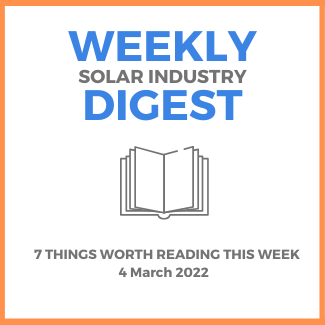The DOE offers seven assessments of tech and resources to address the serious supply chain issues the energy industry’s experiencing. One assessment is solar and points to the fact that the US has the second largest global PV market, something that positions it uniquely. The DOE talks about developing domestic manufacturing and incentivizing the process to offset the higher cost of manufacturing in America.
Energy management company Lumin recently launched their Lumin Edge, an energy management system that provides both monitoring and control. Its three components are the Edge Hub, the Edge modules, and the smartphone application. This offering is built on their earlier success, the Smart Panel, that allowed ordinary circuits on an electrical panel to be converted to smart circuits. However, this one is cheaper, more flexible and easier to install.
The Center for Biological Diversity, Vote Solar, Institute for Local Self-Reliance and Solar United Neighbors all made a request of FERC that they bar utilities from charging customers for the payments they make to industry groups that are “undermining the renewable energy transition.” They argued this on the grounds that it violates First Amendment rights. One example their letter cited was how the funds were used to train utility execs on how to defeat state and local clean energy policies.
CED Greentech dives into how to read a module spec sheet – particuarly in light of recent supply chain constraints and other issues. The article pulls apart how to accurately read about efficiency given its presentation on a spec sheet has changed a bit in recent years, consider MLPE compatibility with a method that can help contractors value-engineer products more effectively, and look at warrantee considerations for three particularly important factors.
The numbers are in from the DOE’s Energy Information Administration and things are certainly looking up for solar. Apparently solar represented over 4% of electricity generation in the US last year and so far the growth has been 26%. Also, 5 states have met more that 10% of electricity demand and 6 more have doubled their solar deployment. Specifically, 6 Midwest and Atlantic Coast states showed triple-digit growth and output doubled in Illinois, Maine, Michigan, Ohio, Virginia, and Wisconsin.
Solar Builder sat down with Baywa.re to discuss how installers can pursue growth in 2022. Tiernay Marsh, their regional sales rep, describes stumbling blocks and what she sees as examples of successful growth strategies. For example, for long tail installers she talks about the effectiveness of slow and steady growth that keeps them operating within their means and exercising careful risk management to more effectively build expertise and gain market share.
Are you a boots-on-the-roof solar installer and want to get into deeper technical aspects of the job? Has it been difficult to make the switch because your bosses need you to keep doing what you’ve been doing? Greg Sellers of Stable Solar shares how his company helps someone like you advance your technical skills so you can transition to becoming a solar technician, rather than simply continuing to do the same installation jobs on roofs day after day. The video is below.


